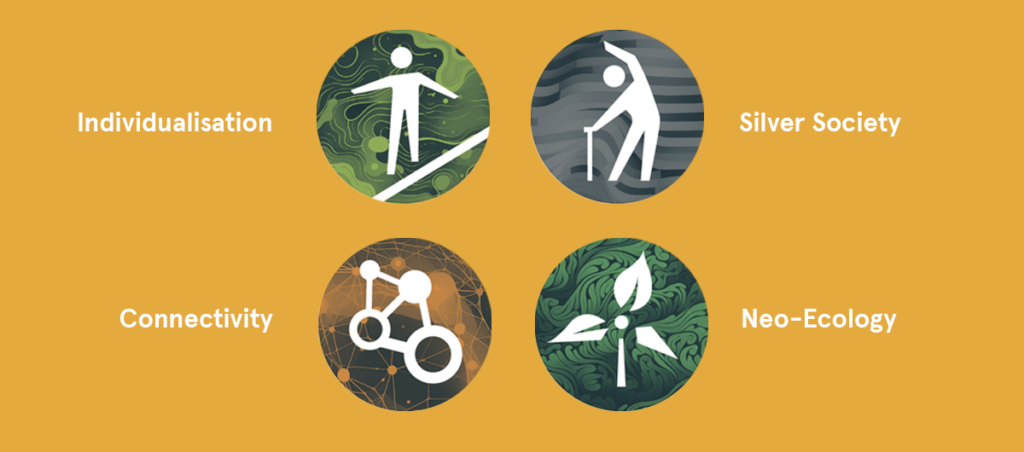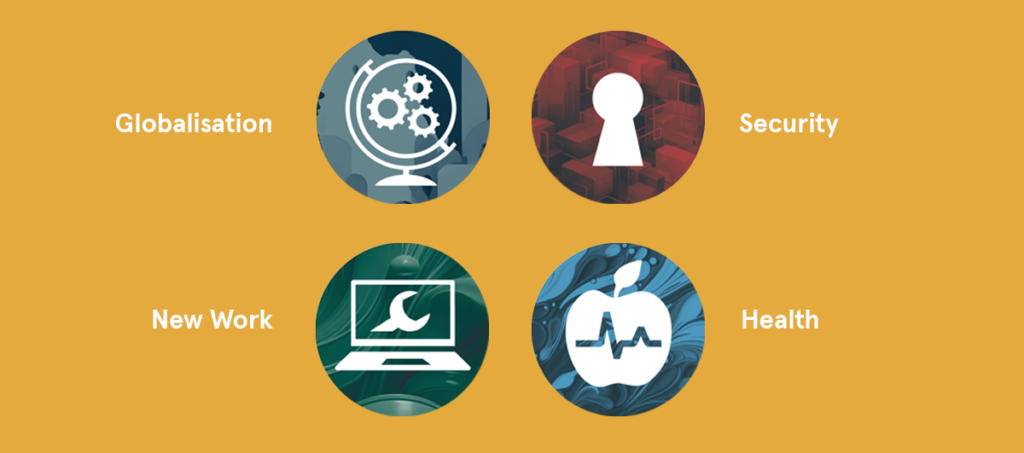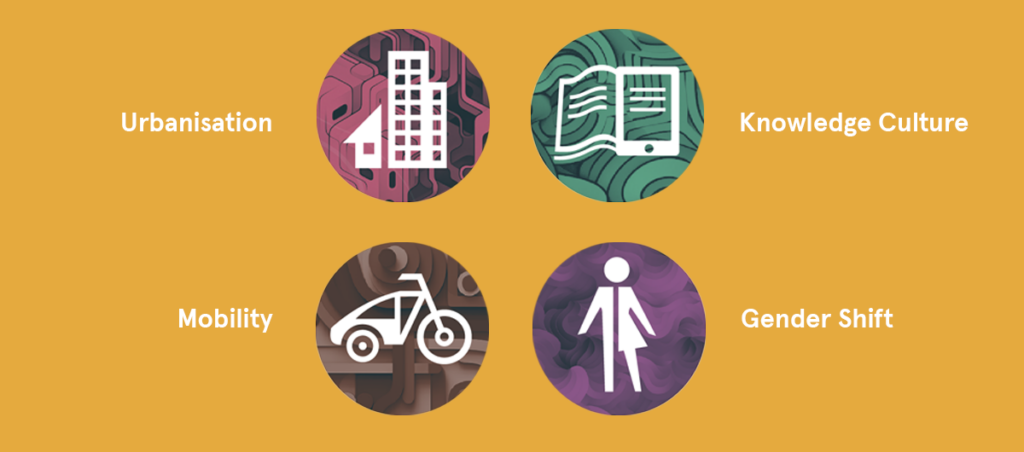The Art of Packaging – Part 2
The future of consumption: Megatrends in food and packaging
In the future, this will develop in the direction of a healthier, more sustainable, more networked and more individualised model that meets people's needs and the demands of the times. From sustainability to digitalisation, these so-called megatrends permeate the entire consumption cycle and are shaping both the market and the way products are packaged.
A close look at these developments not only provides insights into consumers' current preferences, but also enables predictions to be made about the future direction of consumer behaviour and the adjustments companies will need to make to remain relevant. In this second part of our series “The Art of Packaging”, we look at megatrends in food and packaging.
The 12 megatrends
In the shopping basket of the future: Zukunftsinstitut identifies trends and tendencies
Consumption of the future: healthy, conscious, individual
Awareness will also play a central role in future consumer behaviour: Consumers are increasingly aware of the environmental and social impact of their purchases and already favour products that are environmentally friendly, fairly traded, minimally processed and contribute to a sustainable lifestyle. In addition, consumers will increasingly demand personalised products and services that meet their individual needs and preferences.
All in all, these are consumer demands that sometimes seem incompatible or difficult to reconcile. Trend researcher Daniel Anthes sees things differently, however:


79% of German millennials say they need more functional food and drink as they get older (compared to 31% on average for all age groups)
2024 Global Food & Drink Trends – Mintel (Oct. 2023)
74% of Germans consider climate and the environment important when it comes to food
The role of packaging – about aesthetics and ecological responsibility

How can the food packaging industry respond to changing consumer demands? After all, in a world where first impressions count and consumer attention spans are getting shorter and shorter, packaging design plays a crucial role. It’s not just a shell that surrounds a product, but a powerful tool that influences perception, arouses emotions and ultimately guides purchasing decisions. Packaging designers are now faced with the challenge of combining aesthetic appeal with functional practicality to create unique and appealing solutions without losing sight of the ecological aspects.

Packaging engineer Volker Muche, Managing Director of PACOON, one of Germany’s leading agencies for packaging design and sustainability, says: “An area of tension has developed between the idea of sustainability and differentiating a brand from competing products. I have to do the one, but cannot neglect the other. After all, ecological aspects are playing an increasingly important role: sustainable materials and resource-saving packaging concepts are more in demand than ever and contribute to the positive perception of a brand. However, elaborately designed packaging that stands out from the crowd on the supermarket shelf in order to distinguish itself from the competition does not necessarily suggest sustainable behaviour.” The motto here is rather: less is more.
In the 2024 report „Global Consumer New Green Reality“ Mintel’s researchers emphasise: “Sustainability is no longer a selling point – if it ever was or should have been – but should be seen as a vital element that drives brands to continuously innovate and push the boundaries of what is possible and what is necessary.”
Overall, it is clear that consumers expect more and more from brands: transparency, authenticity and a packaging design that is positively perceived through understatement. Trend researcher Daniel Anthes confirms:

Neo-Ecology

Knowledge Culture

Connectivity
Don't miss out on any news and stay up to date with our newsletter. Subscribe here:
New on the shelf
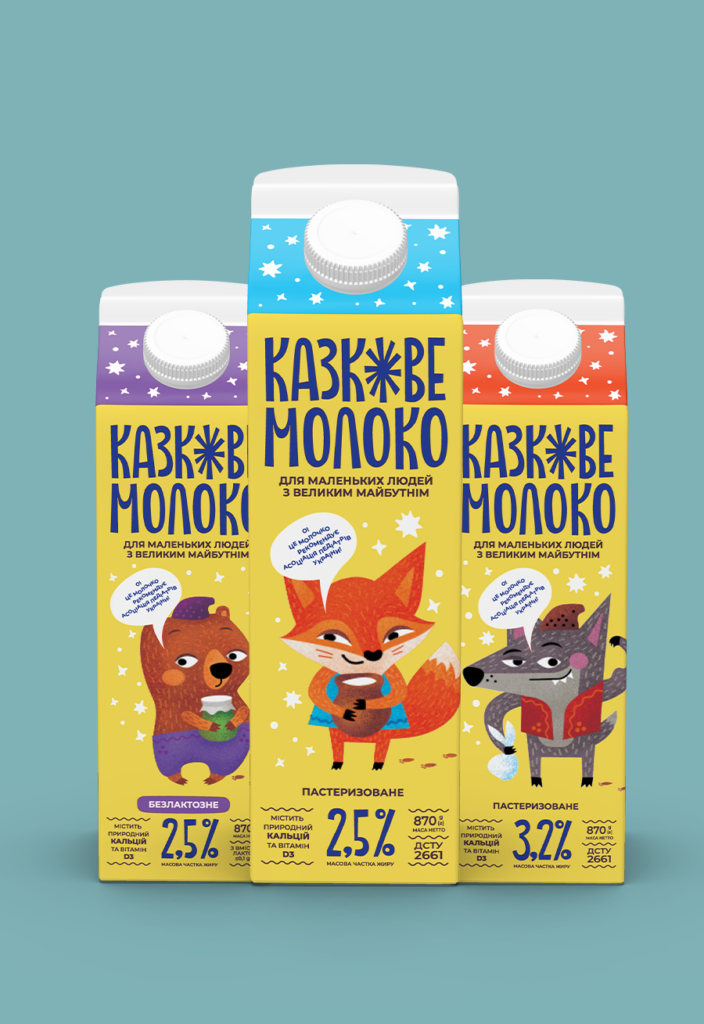
Molokia, Ukraine
Ukrainian manufacturer Ternopil Dairy has updated the designs of its fairytale milk for the Molokia brand with new characters. Wolf, bear, fox, hedgehog, stork and rabbit are now the stars of the packaging. There is also a lactose-free milk. The products are recommended by the Association of Paediatricians of Ukraine.
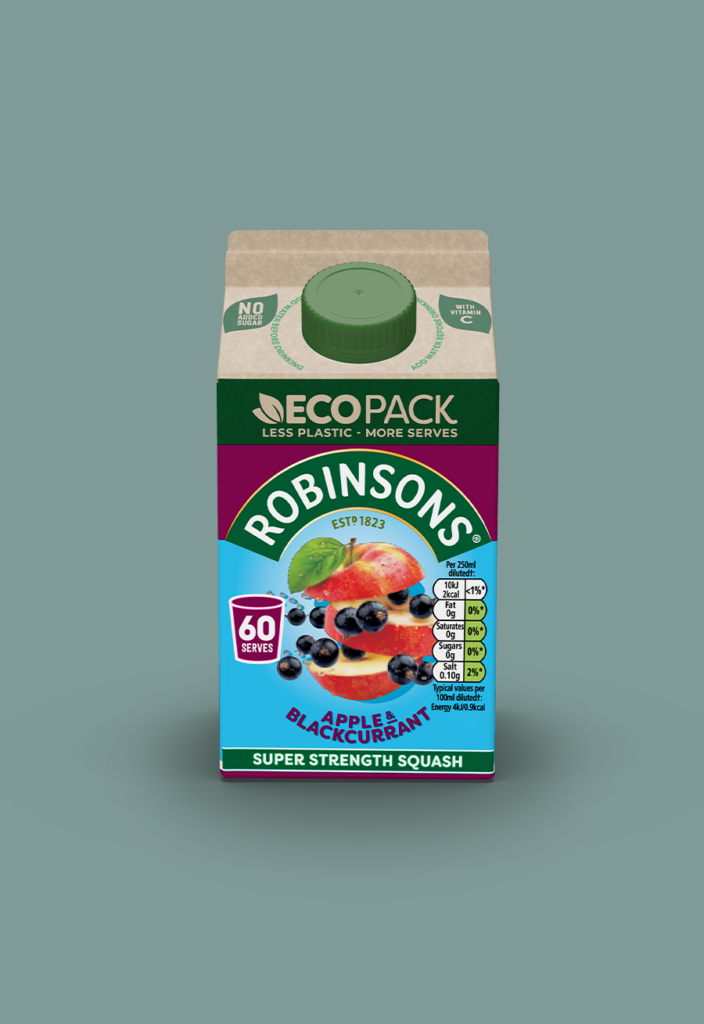
Robinsons, UK
“Less plastic – more serves” – Britvic launched super strength concentrated squash for the Robinsons brand using the 500ml Pure-Pak Classic carton. The result. 60 serves per 500ml and 85% less plastic per serve.
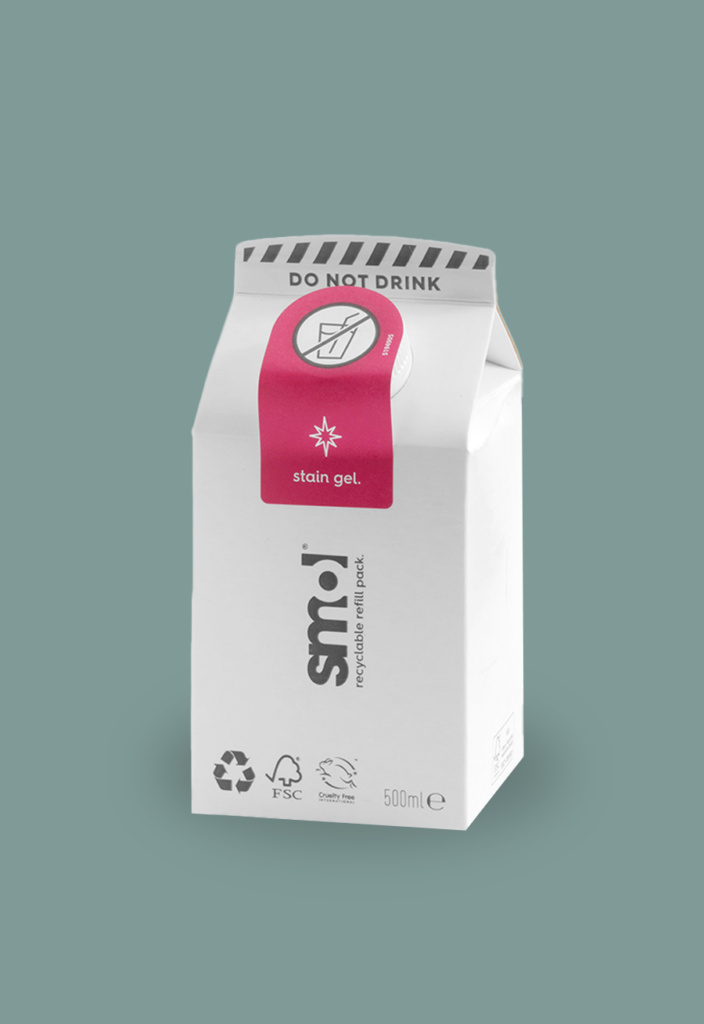
smol, UK
smol’s refill carton range continues to grow. Following dishwashing liquid and fabric softener, stain remover has now also been available in practical cartons since the start of 2024. The original bottle for applying and dispensing the liquids is made from 100% recycled plastic.

LoveMilk, UK
In response to growing consumer concern about plastic waste, the UK’s largest independent dairy launched cartons with tethered caps for its fresh milk products in the food service sector. This will significantly reduce the amount of plastic used in Freshway’s packaging.
